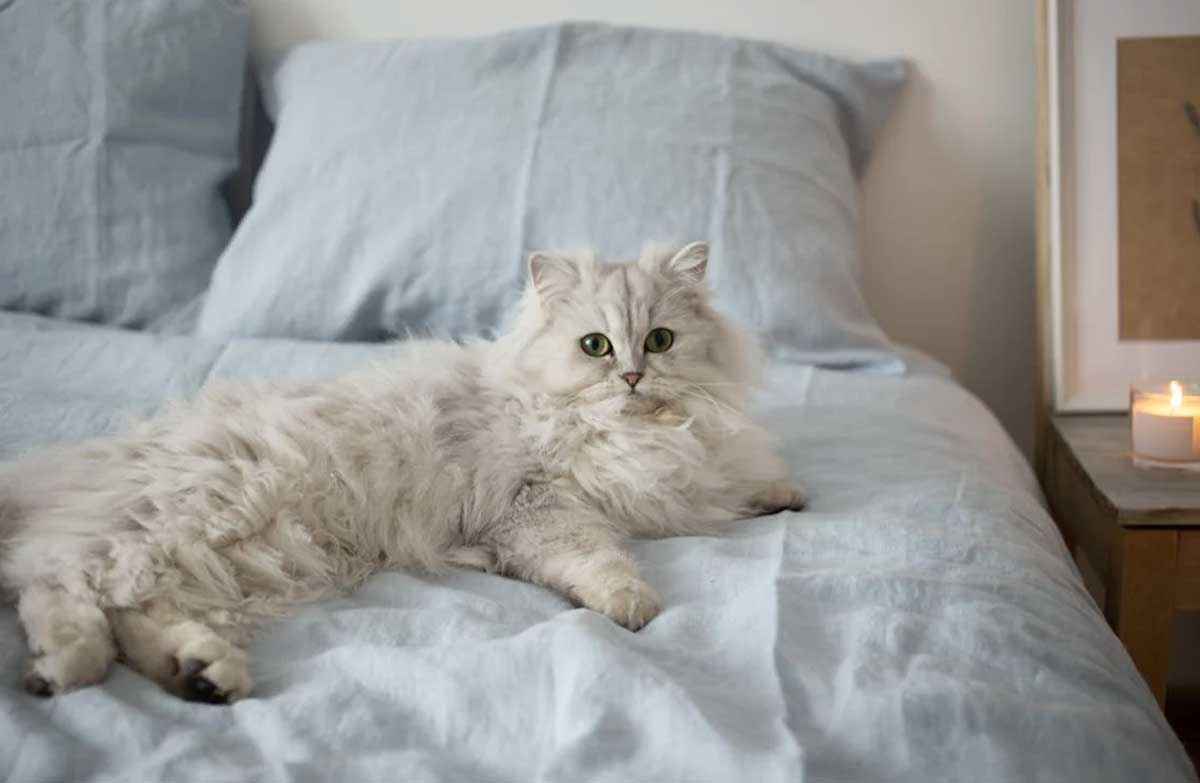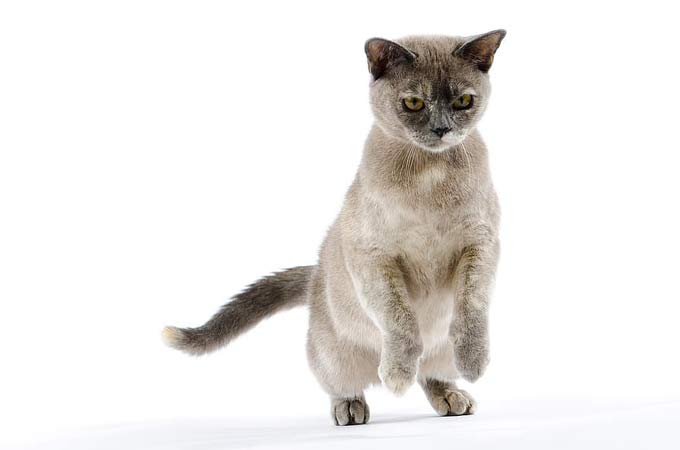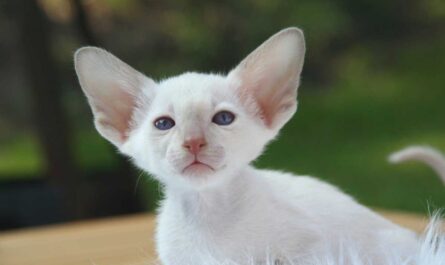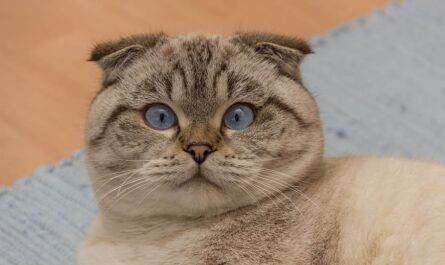Why is my cat staring at me for so long? Cats, mysterious creatures with eyes that seem to hold the secrets of the universe, often leave their owners perplexed with their behaviors. One such behavior that commonly leaves cat owners scratching their heads is the intense staring that cats often engage in. While it may seem unsettling or even creepy at times, there are usually innocent explanations behind this behavior. Understanding why your cat is staring at you can help deepen your bond with your feline friend and ensure their well-being. Below, we delve into 12 possible reasons why your cat might be fixated on you with those enigmatic eyes.
Why is My Cat Staring at Me For So Long: Common Reasons
There are numerous reasons why your cat might be staring at you, ranging from innocent curiosity to more serious health concerns. Understanding the underlying motivations behind your cat’s stare can help deepen your bond with them and ensure their well-being. Whether it’s seeking attention, expressing affection, or simply observing their surroundings, your cat’s stare is just another way they communicate with you. Pay attention to their cues, respond accordingly, and cherish the moments of connection that you share with your feline friend. By nurturing your relationship with your cat, you can create a strong and lasting bond built on trust, love, and mutual understanding.
1. Curiosity and Observation
Your cat’s stare may simply stem from curiosity. Cats are naturally inquisitive creatures, and they enjoy observing their surroundings, including their human companions. Your cat might be studying your movements, facial expressions, or even trying to decipher your emotions. Their keen observation skills reflect their curious nature, and their stare could be their way of gathering information about you and the world around them.
Observing Surroundings: Cats are naturally curious and enjoy observing their environment, including their human companions, to learn about their surroundings.
Gathering Information: Your cat’s stare might be their way of studying your movements, facial expressions, or emotions, as they are naturally curious about the world around them.
2. Seeking Attention or Affection
Another reason your cat might be staring at you is because they’re seeking attention or affection. Cats crave interaction with their human counterparts, and staring can be their way of silently asking for some love and affection. They might be hoping for a cuddle session, a scratch behind the ears, or simply some quality time spent together. So, next time your cat fixes you with a long stare, consider giving them some extra attention.
Desiring Interaction: Cats often stare at their owners to seek attention or affection, indicating a desire for interaction and bonding.
Nonverbal Communication: Staring can be a form of nonverbal communication for cats, silently expressing their need for love and companionship from their human caregivers.
3. Communication
Cats communicate in various ways, and staring is one of them. Your cat’s gaze might be their way of silently communicating with you. They could be trying to convey a message or express their needs through their intense stare. Pay attention to other accompanying behaviors, such as meowing, purring, or body language, to better understand what your cat is trying to communicate.
Nonverbal Communication: Staring can be a form of nonverbal communication for cats, silently expressing their needs or desires to their human caregivers.
Accompanying Behaviors: Observe other behaviors your cat exhibits alongside staring to decipher their message more accurately. Meowing, purring, or changes in body language can provide additional context.
4. Playfulness and Predatory Instincts
Cats are natural hunters, and their predatory instincts often manifest in playful behaviors. Your cat’s stare might be a prelude to pouncing or engaging in a playful chase. They might see you as a potential playmate or prey, especially if you’re moving around or exhibiting behavior that triggers their hunting instincts. Keep an eye out for dilated pupils or a crouched stance, as these are signs that your cat is in a playful mood.
Playful Behavior: Staring can be a precursor to playfulness in cats, indicating their readiness to engage in interactive or hunting-related activities.
Predatory Instincts: Your cat’s stare might be driven by their innate hunting instincts, as they observe and assess their environment for potential prey or playful opportunities. Watch for accompanying behaviors like stalking or pouncing.
5. Bonding and Trust
Staring can also be a sign of bonding and trust between you and your cat. In the animal kingdom, prolonged eye contact is often seen as a display of trust and affection. When your cat stares at you, they’re essentially inviting you into their world and strengthening the bond between you. Return their gaze with a gentle smile or a slow blink to reinforce this bond and show them that you trust and care for them.
Mutual Trust and Affection: Your cat’s stare may indicate that they feel comfortable and secure in your presence, viewing you as a trusted companion and caregiver.
Nonverbal Communication: Silent communication through eye contact can convey feelings of trust, affection, and mutual understanding between you and your cat.
6. Protection and Guarding
Cats are territorial creatures, and they take their role as guardians of their domain seriously. Your cat’s stare might be a sign that they’re keeping a watchful eye on their surroundings, including you. They might perceive you as part of their territory and feel responsible for keeping you safe. While it might seem like they’re just staring at you, they could be scanning for potential threats or intruders, ready to spring into action if needed.
Territorial Awareness: Your cat’s stare may reflect their vigilance in guarding their territory and ensuring the safety of their environment, which includes you as a member of their social group.
Protective Instincts: Even though cats are known for their independent nature, they still demonstrate protective instincts towards their caregivers and territory. Your cat’s stare could be a manifestation of these protective instincts, signaling their readiness to defend you or their territory if necessary.
7. Anxiety or Stress
On the flip side, your cat’s stare could also be indicative of anxiety or stress. Cats are sensitive creatures, and changes in their environment or routine can trigger feelings of unease. If your cat is staring at you more than usual, it might be a sign that something is bothering them. Take note of any other accompanying behaviors, such as hiding, excessive grooming, or aggression, as these could indicate underlying stressors that need to be addressed.
Signs of Discomfort: Your cat’s prolonged stare may signal that they are experiencing anxiety or stress, possibly due to changes in their environment, routine, or interactions with other pets.
Environmental Stressors: Identify potential sources of stress in your cat’s environment, such as loud noises, unfamiliar visitors, or changes in household dynamics, and take steps to mitigate them to help alleviate your cat’s anxiety.
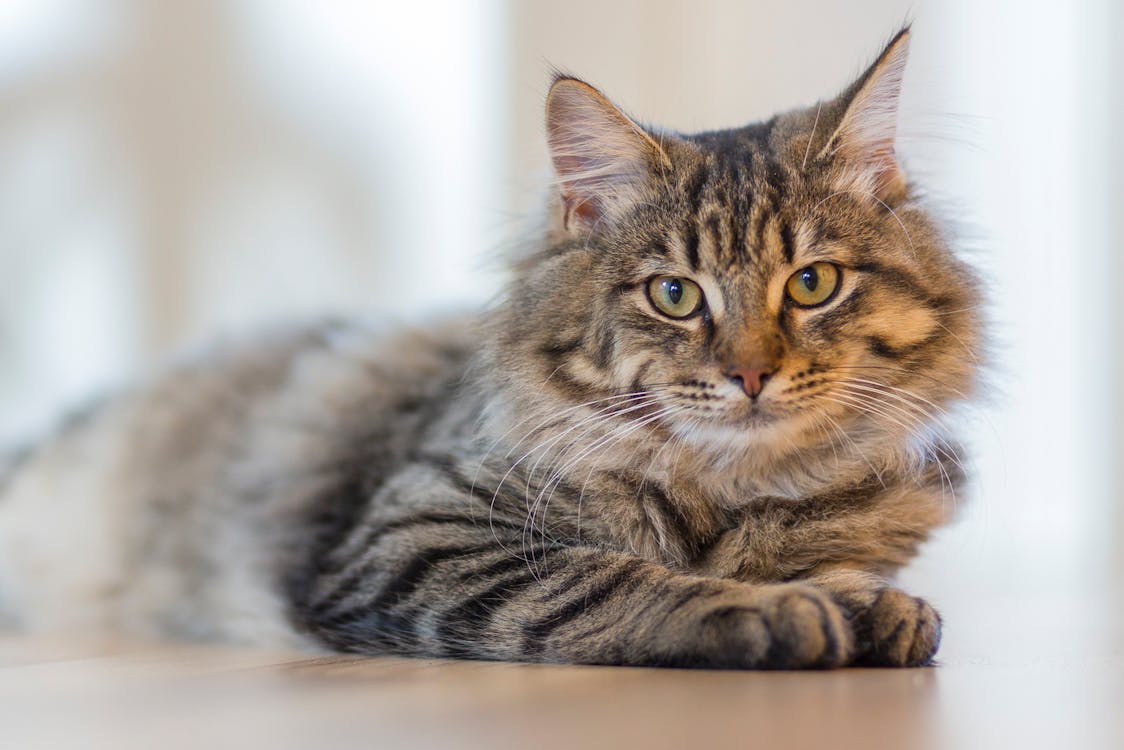
8. Health Issues
Sometimes, staring can be a symptom of underlying health issues in cats. Vision problems, neurological disorders, or pain can cause cats to exhibit unusual behaviors, including staring. If your cat’s staring is accompanied by other concerning symptoms, such as lethargy, loss of appetite, or changes in litter box habits, it’s essential to consult with a veterinarian to rule out any potential health issues and ensure your cat receives the necessary care.
Medical Evaluation: If you suspect that your cat’s staring behavior is related to a health issue, schedule a veterinary examination to assess their overall health and address any underlying medical conditions that may be contributing to the behavior.
Diagnostic Testing: Your veterinarian may recommend diagnostic tests, such as bloodwork or imaging studies, to evaluate your cat’s health and identify any underlying medical issues that could be causing their staring behavior. Early detection and treatment can help prevent further complications and improve your cat’s quality of life.
9. Environmental Stimuli
Your cat’s stare might also be triggered by environmental stimuli, such as sounds or movements that catch their attention. Cats have highly sensitive senses, and they’re often alert to even the slightest changes in their surroundings. If your cat suddenly fixates on you with a stare, it could be because they heard a noise or spotted something moving nearby. Their instinctual response is to assess the situation and determine if there’s any cause for concern.
Sensory Perception: Cats rely heavily on their senses, particularly sight and hearing, to navigate their environment and detect potential threats or sources of interest. Your cat’s stare could be a response to a sound or movement that has piqued their curiosity or triggered their instinctual hunting behavior. Fitness – Meditation – Diet – Weight Loss – Healthy Living – Yoga
Investigate the Environment: Take a moment to observe your surroundings and identify any potential stimuli that might be capturing your cat’s attention. It could be a bird outside the window, the sound of a rustling leaf, or even a household appliance in operation. Understanding what has drawn your cat’s focus can help you better interpret their behavior and respond accordingly.
10. Hunger or Thirst
One of the more straightforward explanations for your cat’s stare is that they’re hungry or thirsty. Cats are creatures of habit, and they quickly learn to associate certain behaviors or cues with mealtime. If your cat stares at you expectantly, especially around their usual feeding times, it’s likely because they’re hoping you’ll take the hint and fill their food or water bowl. Pay attention to their mealtimes and provide them with nourishment to keep them happy and satisfied.
Mealtime Cues: Cats often exhibit behavioral cues, such as meowing, pacing, or staring, to communicate their hunger or thirst to their human caregivers. Recognizing these cues and responding promptly to your cat’s needs can help maintain their health and well-being.
Regular Feeding Schedule: Establishing a consistent feeding schedule for your cat can help prevent hunger-related behavior, such as excessive staring or meowing. Stick to regular mealtimes and avoid overfeeding or underfeeding your cat to maintain a healthy feeding routine.
11. Emotional Connection
Cats are capable of forming deep emotional connections with their human companions, and their stare can be a reflection of these bonds. Your cat might gaze at you with adoration, gratitude, or even a sense of companionship. They might see you as their trusted confidant, their source of comfort, or their favorite playmate. Cherish these moments of emotional connection and reciprocate your cat’s affection with love and care. Cat accessories on Amazon
Building Trust and Affection: Over time, cats develop a strong bond with their caregivers based on trust, mutual respect, and positive interactions. Your cat’s stare could be their way of expressing their affection and appreciation for your presence in their life. Take the time to engage with your cat, whether through play, cuddling, or simply spending quality time together, to nurture and strengthen your emotional connection.
Understanding Nonverbal Cues: While cats may not communicate in the same way humans do, they express their emotions and needs through subtle cues, including body language and facial expressions. Pay attention to your cat’s gaze, posture, and vocalizations to better understand their feelings and respond accordingly. By fostering open communication and empathy, you can deepen your emotional bond with your cat and create a fulfilling relationship based on trust and understanding.
12. Inquisitiveness about Routine
Cats are creatures of habit, and they thrive on routine. Your cat’s stare might be their way of monitoring your daily activities and routines, ensuring that everything is running smoothly. They might be curious about your schedule, habits, or rituals, and their stare is their way of staying informed and involved in your life. Embrace their inquisitiveness and involve them in your daily routines whenever possible to strengthen your bond and provide them with mental stimulation.
Enriching Their Environment: Incorporating your cat into your daily routines can enrich their environment and provide them with mental stimulation and physical exercise. Whether it’s joining you for your morning yoga session, watching you prepare meals in the kitchen, or lounging together while you work or relax, including your cat in your daily activities helps keep them mentally engaged and socially connected.
Promoting Bonding Opportunities: Sharing experiences and routines with your cat creates opportunities for bonding and social interaction. Take the time to engage with your cat during everyday activities, such as grooming, feeding, or playtime, to strengthen your relationship and build trust. By incorporating your cat into your daily routines, you can deepen your bond and create lasting memories together.
Other Interesting Articles
- How to Help Your Cat Overcome Fears in 13 Strategic Steps
- 13 Easy Tricks To Teach Your Cat: Basic Feline Training Guide
- How To Train Your Cat: 15 Easy Steps To Teach New Things
- Why Do Cats Have Tails? 4 Fun Facts You Didn’t Know
- 16 Simple Ways To Establish A Stronger Bond With Your Cat
- How To Train Your Cat/Kitten To Sit: Steps, Command, Guide
- Cat Giving Birth: From Your Feline Pregnancy to Kitten Care
- Fading Kitten Syndrome: Age, Causes, Symptoms, Treatment
- Kitten Bottle Feeding: Chart, Tips, Recipe, Challenges, Guide
- Cat Pregnancy: Timeline, Signs, Labor, Behavior, Stages
- 16 Silent Killers of Cats Every Pet Owner Must Be Aware Of
- Do Mother Cats Discipline Their Kittens? A Guide To Owners
- How To Take Care of A Kitten 6 Weeks Old: A 7-Step Guide
- How To Tell If Your Cat is Trying to Hurt You: A To-Do Guide
- How To Tell If Your Cat Has Tapeworms: What You Can Do
- How To Tell If My Cat is in Pain After Neutering: What To Do
- How To Get A Cat To Trust You Fast: Signs, Tips, Techniques
- 12 Signs Your Cat is a Boy: Tips To Distinguish A Male Cat
- Single Kitten Syndrome: Age, Signs, Symptoms, Treatments
- How To Tell If Your Cat Can’t See Well: What You Can Do
